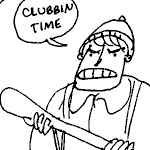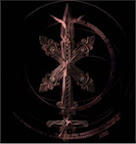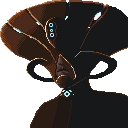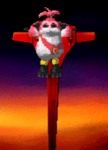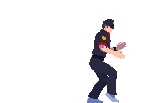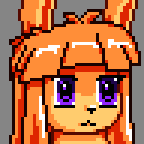CLASS SEPARATION
Posts
Pages:
1
How do you differentiate characters? I ask because of people complaining about Mages in Dragon Quest IX. Mages' typically deal around the same damage as a Warrior with their best spells... but hit all or lots of enemies. Eventually they also get more spells in the Frizz/Frizzle/Kerfrizzle line, which are single-target nukes, but those come later for a reason. Mages are about weakening entire groups of enemies, or possibly killing outright with an elemental weakness. In boss battles, they buff allies and debuff enemies. In Dragon Quest, ailments and debuffs are quite useful, so this is a very effective tactic.
How are melee characters separated, then? Basically, Warriors are very slow but get awesome armor and - I think - the best base Resilience stat (adds to Defense). Martial Artists are incredibly fast, good at evasion and deal awesome damage, but can't wear heavy armor or use the most powerful weapons. Thieves are mostly an awkward-yet-useful support class that get lots and lots and lots of criticals, which ignore an enemy's defense. This means that Thieves do well against armored enemies, even though they only have a little dagger. Gladiators are in the middle in terms of speed/crits/etc., but have high HP and get BIG AXES/HAMMERS RARGH. I mention speed because 1) speed is one of the best things to have on your side in DQ, in terms of healing and, 2) in DQIX, comboing is a great thing to match up with other classes (repeating offensive actions on the same target without interruptions raises damage done up to 2x and is hella effective, even with plain ol' attacks).
I'm talking about RPGs mostly, but if you want to bring up action games or whatever that's fine.
I'm not all that imaginative when it comes to the systems behind everything. When I do classes, I do it in what I would suppose is the standard way. I just make "pyramids" for what a character is good and bad at, like someone might be really fast, have above average magic, average strength, and bad HP or something like that.
I tend to go with the 4 main classes Fighter, Rogue, Healer, Mage and than make small adjustments to fit the character's style and cultural background.
ie The Elven Knight is faster than the Human Knight and knows some useful support magic but doesn't hit as hard and can't wear the heavier armor.
Mind you all my game attempts have been story based.
ie The Elven Knight is faster than the Human Knight and knows some useful support magic but doesn't hit as hard and can't wear the heavier armor.
Mind you all my game attempts have been story based.
LockeZ

I'd really like to get rid of LockeZ. His play style is way too unpredictable. He's always like this too. If he ran a country, he'd just kill and imprison people at random until crime stopped.
5958
I try to make each character (or class) have a significantly unique style that none of the other classes come close to. If one character (or class) is just marginally faster and less powerful than another, or has different elements, or something minor like that, it usually doesn't feel like enough of a difference to me. I'd rather they have completely different styles of combat. And, if possible, different styles of learning new abilities. In my upcoming RMXP game, each character will have a different way of learning - the swordsman has SaGa style lightbulbs, the blue mage learns spells when enemies cast them, the thief steals skill scrolls from enemies, the summoner learns spells from plot events and sidequests, the mage will probably use some sort of sphere grid...
Most of the classes in Final Fantasy 5 differentiated themselves really well. Black Mages and Summoners, for example, both used offensive magic - but black mages were capable of hitting only one enemy at a time, and could use cheap magic spells when needed, giving them a lot of versatility; while summoners were much more powerful and had some defensive spells, but their spells all had very high MP costs, forcing summoners to spend a lot of their turns doing things to regain MP. And of all the classes in the game, those are probably the two that are most similar to each-other.
Most of the classes in Final Fantasy 5 differentiated themselves really well. Black Mages and Summoners, for example, both used offensive magic - but black mages were capable of hitting only one enemy at a time, and could use cheap magic spells when needed, giving them a lot of versatility; while summoners were much more powerful and had some defensive spells, but their spells all had very high MP costs, forcing summoners to spend a lot of their turns doing things to regain MP. And of all the classes in the game, those are probably the two that are most similar to each-other.
Altima XTREME has twelve characters who learn five different skills across nine level ups. Each character is unique from each other in that each is pretty much their own class. To try and make them distinct, I...
1) Each character has different stat starting values and growth rates. All stat gains are just a linear function. To balance them I punched them all into Excel and colored them if the stat gain was bad, decent, or good and made sure each character had 1-2 good stat growths and 1-3 bad. I'd adjust the character's skill quality based on their number of good and bad stat growths. To keep stat gains different from others and to make sure I had a balanced distribution of characters who were good and bad with certain stats: 3-4 characters with good growth, 4-6 with decent, 3-4 with bad growth across a certain stat. I also calculated the standard deviation of the level 10 stats and adjusted them so the std felt like it was big enough. Also made sure no ending numbers were the same too.
This also took some stat rebalancing so a character with good agility is more comparable against a character with good attack.
2) I reorganized equipment into four groups of weapons (Melee, Simple, Ranged, and Sticks) and two groups (Light, Heavy) for each type of equipment sans Accessories (Armor, Helmet, Shield). Characters can only equip certain groups of equipment, like the Front Line Heal Stick can equip Simple+Staves weapons and Heavy Armor+Shields+Helmets.
Some equipment is universal, like all Simple weapons, the first three armors, some oddball or top tier gear (Mystic Sword), and all accessories. There's also an accessory that lets a character ignore equipment restrictions if you want to use a slot for it.
Song Yong don't give two shits about restrictions though, he can equip anything right out of the chute.
3) Skill sets! Each character gets their own five unique skills although some equipment give skills which anybody can use. I gave characters somewhat specific roles and subroles. For example, Sideburns' main role is damage output. Specifically killing a specific type of enemy. He can do extra damage to three of the eight types of enemies in the game (and there's only two of one type so it is more like three of seven). The other anti-enemy types are spread out as subroles to other characters. This does mean multiple characters can do similar functions but nobody has the same main role as the Sideburns, they target different enemies, and their stats may not be as good for that function. Some characters don't have a main role but have a bunch of sub roles instead. The Hero is one: All his skills are a mix of damage, healing, status affliction, and party+self buffing.
I even try to mix up how my healers work. The Medic has two healing spells: A cheap single target and an ultimate heal party skill that also revives dead allies, both using his spirit for how much they heal (and can therefore be improved by equipment and buffs). The Medic is also one of the fastest characters for emergency healing. The Front Line Heal Stick doesn't care about his Spirit: He can give a regen based off a character's maximum HP or just top it off regardless of amount lost. He's slow but he also has a aggro management skill and the most HP making him a heal tank.
Something I placed more emphasis on was skill cost vs maximum MP. Some skills use almost all of the MP a character has (the highest is currently Ji Mian which uses 35 MP of Song Yong's maximum 40 MP). Recovering spent MP is a bit more costly than popping Ethers or Elixers too: In battle MP healing items are limited to healing up to half a character's maximum MP which turns into needing at least two actions to recover a character's MP from low to full again. There also isn't a common party MP healing item. Some characters don't have MP cost issues but all the best skills cost a lot of MP and if you want to use another skill again it'll cost you a precious resource: actions.
1) Each character has different stat starting values and growth rates. All stat gains are just a linear function. To balance them I punched them all into Excel and colored them if the stat gain was bad, decent, or good and made sure each character had 1-2 good stat growths and 1-3 bad. I'd adjust the character's skill quality based on their number of good and bad stat growths. To keep stat gains different from others and to make sure I had a balanced distribution of characters who were good and bad with certain stats: 3-4 characters with good growth, 4-6 with decent, 3-4 with bad growth across a certain stat. I also calculated the standard deviation of the level 10 stats and adjusted them so the std felt like it was big enough. Also made sure no ending numbers were the same too.
This also took some stat rebalancing so a character with good agility is more comparable against a character with good attack.
2) I reorganized equipment into four groups of weapons (Melee, Simple, Ranged, and Sticks) and two groups (Light, Heavy) for each type of equipment sans Accessories (Armor, Helmet, Shield). Characters can only equip certain groups of equipment, like the Front Line Heal Stick can equip Simple+Staves weapons and Heavy Armor+Shields+Helmets.
Some equipment is universal, like all Simple weapons, the first three armors, some oddball or top tier gear (Mystic Sword), and all accessories. There's also an accessory that lets a character ignore equipment restrictions if you want to use a slot for it.
Song Yong don't give two shits about restrictions though, he can equip anything right out of the chute.
3) Skill sets! Each character gets their own five unique skills although some equipment give skills which anybody can use. I gave characters somewhat specific roles and subroles. For example, Sideburns' main role is damage output. Specifically killing a specific type of enemy. He can do extra damage to three of the eight types of enemies in the game (and there's only two of one type so it is more like three of seven). The other anti-enemy types are spread out as subroles to other characters. This does mean multiple characters can do similar functions but nobody has the same main role as the Sideburns, they target different enemies, and their stats may not be as good for that function. Some characters don't have a main role but have a bunch of sub roles instead. The Hero is one: All his skills are a mix of damage, healing, status affliction, and party+self buffing.
I even try to mix up how my healers work. The Medic has two healing spells: A cheap single target and an ultimate heal party skill that also revives dead allies, both using his spirit for how much they heal (and can therefore be improved by equipment and buffs). The Medic is also one of the fastest characters for emergency healing. The Front Line Heal Stick doesn't care about his Spirit: He can give a regen based off a character's maximum HP or just top it off regardless of amount lost. He's slow but he also has a aggro management skill and the most HP making him a heal tank.
Something I placed more emphasis on was skill cost vs maximum MP. Some skills use almost all of the MP a character has (the highest is currently Ji Mian which uses 35 MP of Song Yong's maximum 40 MP). Recovering spent MP is a bit more costly than popping Ethers or Elixers too: In battle MP healing items are limited to healing up to half a character's maximum MP which turns into needing at least two actions to recover a character's MP from low to full again. There also isn't a common party MP healing item. Some characters don't have MP cost issues but all the best skills cost a lot of MP and if you want to use another skill again it'll cost you a precious resource: actions.
@GRS.
I really like your way of figuring stats and classes! I do the same thing with Excel myself. I have a great big spreadsheet with a basic page and a page for each character. I also use linear growth to make it easier on me and on the player. Though instead of balancing good and bad stat growths, I just have a total cell under the stat growth column that I use to make it the same for each character.
As far as equipment goes, I like your approach to that system. It's a pretty interesting take on the standard equipment system. Equipment is something I'm always trying to play with to make it unique, innovative, or at least fun. Cool idea about the accessory to remove equipment restrictions, too.
I also like how you've separated healers into differing types rather than just two guys who both can heal and might have a slightly different rate of learning. An example from my game is a healer who can only heal with a periodic heal (HoT), then I have a self-heal on the two characters who sacrifice life to perform powerful attacks. The second actual healer has access to a powerful direct heal and a very powerful all-party heal. His caveat is that he needs to generate Ki energy (by using attacks or through passive abilities) to fuel them, so they aren't exactly on demand. The last "healer" doesn't really heal, but she's able to project shields that absorb damage and buff the characters' defense, reducing damage that way.
And finally, the point about actions being a precious resource is something I feel is massively overlooked. In my game, Devil Star, every action has its own "time cost." It utilizes the same ATB bar found in various Final Fantasy's, but a command may only consume 1/4 of the bar, or it may consume 1.5 bars (putting you in the negative.) This way, using a potion might be beneficial over using a healing spell just for the simple fact that items have a really low ATB consumption cost. (Also in my latest project, there is no MP only HP, Adrenaline, and Stamina (similar to ATB.))
Time and action management is a fantastic way to balance an RPG and makes for much more interesting gameplay. Also, as a side note, Dragon Quest IX is a lot of fun. I like the way they've handled the class system. My only gripe would be it feels weird the way you start at Lv. 1 when you switch vocations, but it works out in the end. Seems odd to be a 300 hit-point gladiator and suddenly be a thief with 35 hit points.
I really like your way of figuring stats and classes! I do the same thing with Excel myself. I have a great big spreadsheet with a basic page and a page for each character. I also use linear growth to make it easier on me and on the player. Though instead of balancing good and bad stat growths, I just have a total cell under the stat growth column that I use to make it the same for each character.
As far as equipment goes, I like your approach to that system. It's a pretty interesting take on the standard equipment system. Equipment is something I'm always trying to play with to make it unique, innovative, or at least fun. Cool idea about the accessory to remove equipment restrictions, too.
I also like how you've separated healers into differing types rather than just two guys who both can heal and might have a slightly different rate of learning. An example from my game is a healer who can only heal with a periodic heal (HoT), then I have a self-heal on the two characters who sacrifice life to perform powerful attacks. The second actual healer has access to a powerful direct heal and a very powerful all-party heal. His caveat is that he needs to generate Ki energy (by using attacks or through passive abilities) to fuel them, so they aren't exactly on demand. The last "healer" doesn't really heal, but she's able to project shields that absorb damage and buff the characters' defense, reducing damage that way.
And finally, the point about actions being a precious resource is something I feel is massively overlooked. In my game, Devil Star, every action has its own "time cost." It utilizes the same ATB bar found in various Final Fantasy's, but a command may only consume 1/4 of the bar, or it may consume 1.5 bars (putting you in the negative.) This way, using a potion might be beneficial over using a healing spell just for the simple fact that items have a really low ATB consumption cost. (Also in my latest project, there is no MP only HP, Adrenaline, and Stamina (similar to ATB.))
Time and action management is a fantastic way to balance an RPG and makes for much more interesting gameplay. Also, as a side note, Dragon Quest IX is a lot of fun. I like the way they've handled the class system. My only gripe would be it feels weird the way you start at Lv. 1 when you switch vocations, but it works out in the end. Seems odd to be a 300 hit-point gladiator and suddenly be a thief with 35 hit points.
Uhm, does it count as differentiating if you've got two people/classes that do the same thing, but for different targets? Part of the design of the game world I'm building involves a dual form of HP: Endurance (physical HP) and Spirit (spiritual HP; name subject to change.) Thus, there tend to be two (or three) variants of each general 'class' of character; one for each type, plus sometimes a 50/50 version (similar to the original red mage class, essentially). Mechanically, a 'defender' character isn't really different from a 'warder' character, but the defender is only good against physical or hybrid threats, while the warder is good against spiritual or hybrid threats. (A mage's fireball, or for that matter most general 'magic', would be hybrid threats.) For the record, if I understand the MMO terminology right, both classes would generally be 'Tank' archetype.
post=153453willpower/sheer force
I love multiple health/mana pools, so it counts.
LockeZ

I'd really like to get rid of LockeZ. His play style is way too unpredictable. He's always like this too. If he ran a country, he'd just kill and imprison people at random until crime stopped.
5958
@EnderX: That makes them different but only in the simplest way. It would be more interesting if they handled themselves more differently.
post=153733
@EnderX: That makes them different but only in the simplest way. It would be more interesting if they handled themselves more differently.
Correction: only in an awesome way
I tend to give my characters skills in more than one area since I believe that making characters to specialized decreases the tactical element. After all, if you have one character who's only good at using offensive physical skills it will be obvious what he should do every round. Regardless of whether or not I'm right in that, I do make my characters capable in multiple areas, so if I have two characters who's main draw is physical attacks they will still differ in other areas. Also, I do have ways to differentiate between two physical attackers even if we only count the physical skills.
In one now abandoned project I had two physical fighters. However, one was a strength fighter while the other was a dexterity/agility fighter. I set the game up so that against low defense enemies the dex/agi fighter could do about the same amount of damage as the strength fighter, but against high defense enemies his damage would plummet. Meanwhile, the dex/agi fighter is good at hitting evasive enemies while the strength fighter will miss a lot if he targets them. They also defend differently, the strength fighter has high defense while the dex/agi fighter has high evasion.
In one now abandoned project I had two physical fighters. However, one was a strength fighter while the other was a dexterity/agility fighter. I set the game up so that against low defense enemies the dex/agi fighter could do about the same amount of damage as the strength fighter, but against high defense enemies his damage would plummet. Meanwhile, the dex/agi fighter is good at hitting evasive enemies while the strength fighter will miss a lot if he targets them. They also defend differently, the strength fighter has high defense while the dex/agi fighter has high evasion.
Oddly enough, I usually give my dex/agi fighters the "ignore armor" attacks, or at least a "deal extra damage to armored enemies" attack. Thing is, it costs MP/SP/TP/PP/AP/WhateverP while the str fighter can just bash it anyway.
If I went through and detailed each and every possible sub-class I could think of within the various archetypes (Tank, Fighter, Healer, Mage, Support) in an article, would you guys be interested in it?
If I went through and detailed each and every possible sub-class I could think of within the various archetypes (Tank, Fighter, Healer, Mage, Support) in an article, would you guys be interested in it?
post=154004I love thee kinds of things.
If I went through and detailed each and every possible sub-class I could think of within the various archetypes (Tank, Fighter, Healer, Mage, Support) in an article, would you guys be interested in it?
post=153036RMN suxHow do you differentiate characters?...
How I do it? There are three different types of damage you can do and many of the characters are strange amalgams of typical RPG prototypes. Also, balance is good, but if you balance a single player game too much, you might wind up with the problem of the classes feeling too "samey". Just make sure no one is hax and no one is completely useless.
Pages:
1














